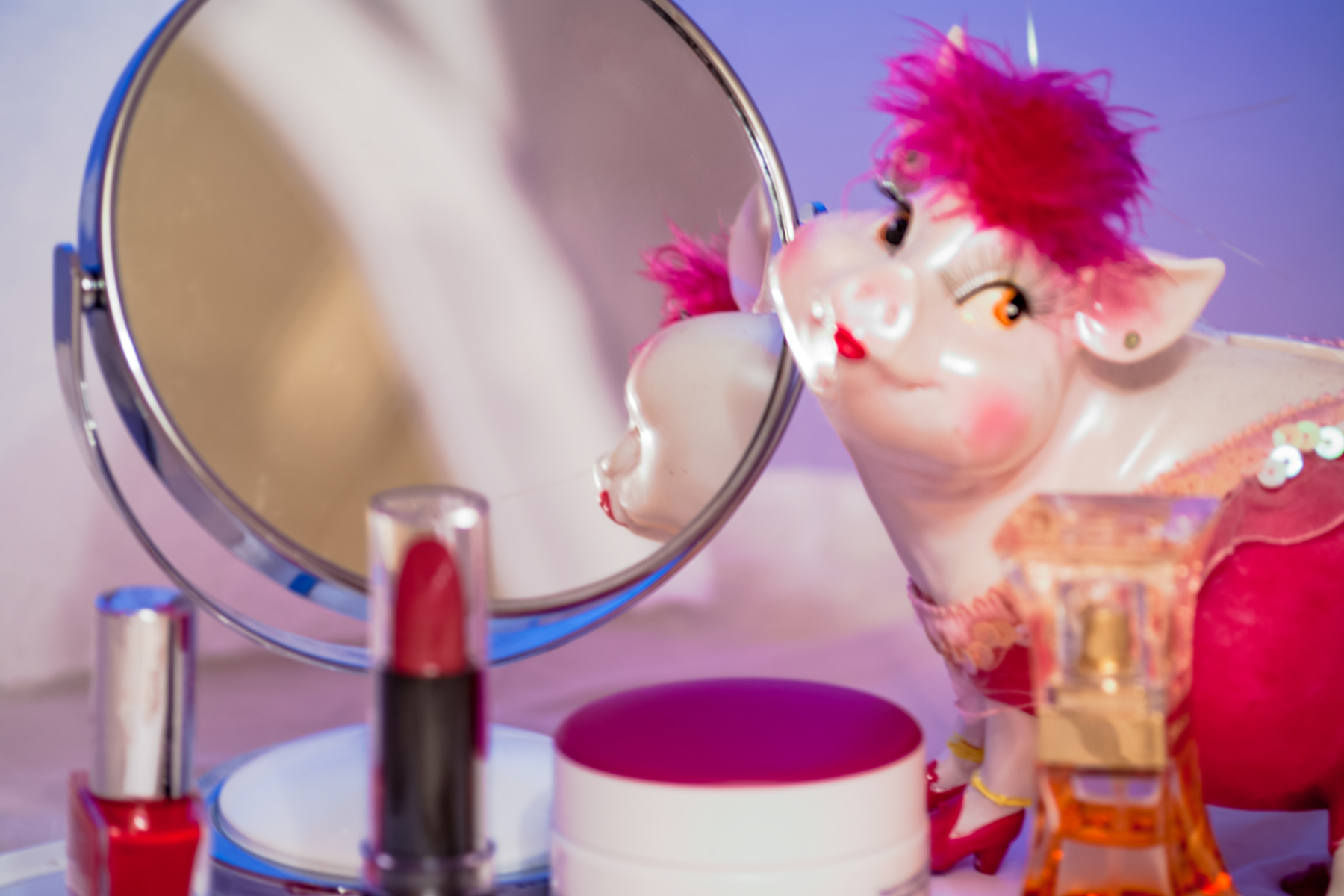In case you missed it last month, we took a look at sustainability and why it should be at the heart of your brand strategy. You can read that here. In brief, being a sustainable business is about a whole lot more than cycling to work and putting things in the correct bins. Sustainability for brands is being ethical in everything that you do, striving for consumer and employee wellbeing, delivering economic value, and looking after the environment.
When it comes to actions, this can be fairly subjective depending on what kind of business or brand that you are. More formalised programmes such as B Corp exist to help guide businesses to becoming a force for good. But when it comes to marketing your business sustainably, or engaging in sustainability marketing, where do you start? What does it look like?
In today’s blog we’re looking at brands who’ve tackled sustainability head-on and set a great example not only in terms of execution, but sincerity too. If you’re new here, you’ll know that sincere and honest branding is what we’re all about. It’s particularly vital when dealing with such important commitments such as being a sustainable brand or offering a sustainable service.
Before we dive in, let’s take a moment to understand the purpose of a sustainable marketing campaign. The naysayers will have you believe that campaigns such as these are simply virtue signalling – brands jumping on a metaphorical bandwagon to appeal to the younger demographic who typically align themselves with brands who engage with topics such as climate change, global warming and net zero.
In reality, many of the brands engaging in sustainable campaigns have made clear their views on the world, people and the environment long before. After all, we live in an age where frauds and fakes are almost immediately called out. ‘Greenwashing’ is sadly prevalent and there are indeed brands engaging in sustainability marketing just ‘for the likes’.
However, brands such as Lego, Apple, Patagonia and Ben & Jerry’s have a long history of social action. They are now simply acting upon the science and research that is undeniably pointing towards global warming, and using their platforms to not only spread a message, but demonstrate the changes they’re making in their own operations to make the world a better place.

Patagonia: ‘Don’t Buy This Jacket’
Iconic? Yes. Revered? We think so. This 2011 campaign started as a full-page ad in the New York Times and was a direct comment on the excessive consumerism seen in fashion and other industries. Several paragraphs gave readers insight into just how intensive the garment-making process can be. Even with an eco-conscious approach to manufacturing, 130 litres of water were required to produce just one jacket.
So what’s the message here? Are they really telling you not to buy their product? Well, yes and no. The ‘Ronseal’ side of the campaign certainly discourages you from running out to buy a new jacket unless you really need one. But on the other hand, we are being told to ‘buy better’. And here lies the marketing: Patagonia’s ‘Common Threads’ initiative, broken down as ‘reduce, repair, reuse, recycle’.
By purchasing a higher quality product (with undoubtedly a higher price point), we are reassured that the garment is not only manufactured with the environment and people in mind, but it will last longer and be repaired should it become damaged. The brand even goes one step further and re-sell clothing made from recycled Patagonia gear.
This impressive effort combined with their history of activism around racism, equality and even politics, puts Patagonia front of mind when we think of brands truly walking the walk when it comes to sustainability.
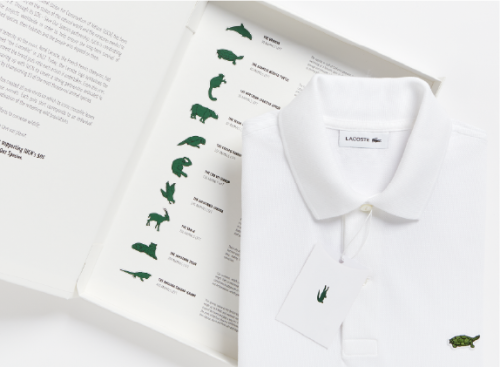
Lacoste: Save our Species
Whilst wildly impressive, Patagonia’s campaign certainly won’t win any design awards. On the other hand, Lacoste’s efforts to raise awareness of endangered species is exactly the kind of creativity that we like to see.
Known for their familiar crocodile motif—a small, green, embroidered logomark—the brand ‘disappeared’ the croc and replaced it with turtles, lemurs, rhinos, condors, tigers and more – still in the familiar forest green colourway.
These polo shirts were limited, and all proceeds were donated directly to the preservation of each species. Whilst this is a superb and commendable example of sustainability marketing, it’s more specifically known as ‘cause marketing’, which has since become a pivotal part of many organisations’ brand strategy.
This brand-centric approach to campaigning is a true example of sustainability marketing. It’s rare to see brands changing their logomark in such a distinct way. Of course, many brands add LGBTQIIA colours to their social media icons, but in recent years this movement has drawn criticism from campaigners who want to see more than just a 30-day ‘social media takeover in order to drive cultural change
Lacoste have put their money where their mouth is and raised awareness of causes many of us may not have even been aware of at all. Their no frills campaign puts funds directly where they’re needed and the ‘limited run’ is a strong example of scarcity marketing. Great work.

Pokemon Go: Earth Day Cleanup
Arguably, the first two examples don’t require much of a response from the consumer. Simply by a garment, or don’t. That’s why this 2018 campaign from Pokemon Go’s creator, Niantic, really stands out to us.
Partnering with 46 non-profit organisations around the world, the game developer encouraged volunteers to take part in 41,000 hours of litter picking, resulting in a staggering 145 tonnes of rubbish being collected from streets and parks.
Pokemon Go is a mixed reality game in which users hunt ‘species’ via their smartphone’s camera along with its GPS and map capabilities. Users are already outdoors and active, as a basic requirement of the game. By mobilising their fanbase for a good cause, Niantic were able to make a huge difference to countless public areas all over the world, as well as engaging with a young-middle-aged audience on a particular environmental issue. Players worked in groups of upto 2,500 people and were rewarded with in-game achievements.
This ‘guerilla’ style campaign is a tremendous example of integrating an important cause seamlessly into an existing channel. I mean, why wouldn’t you want to take part if you’re already a Pokemon Go player?
The campaign was such a success that it has been repeated for multiple years, and we hope to see this continue, and for other brands to take note of what you can achieve on a community level.
Honesty is the best policy
Of course, everything we’ve looked at here will have had a sizeable budget. But the essence of these campaigns and the message behind them is something that can be applied to a business of any size. Whether that’s taking a more sustainable view on how your brand is positioned against the competition, diverting funds to direct action, or bringing your customers together to make a change, a lot can be done without the need for big, brash, bold campaigns. It’s the sincerity that counts, and it’s what lands with audiences most of all.
The final and perhaps most important point to consider here harks right back to our core Journey message of ‘honest brands’. To appear to be sustainable, you must of course be sustainable. Change starts at the core of your business – NOT in your marketing. You can’t shout from the rooftops when there’s skeletons in your basement, so do your internal work first, and only then you can start to think about talking about sustainability externally and making it a part of your brand.
Where to begin? Start by measuring, researching and understanding. Where do you stand as a business? What do your emissions look like? What kind of work are you doing and what impact does that have on the world? What does a good client/good supplier look like to you? How do you support not only your own staff, but the community too?
These questions are just the tip of the iceberg, but for businesses with a desire to make a genuine change, they need to be answered. These are also questions you’ll need to answer should you ever consider becoming a certified B Corporation, and if that’s not on your roadmap any time soon, it’s still a great framework to follow.
After all, who wants to be an unsustainable business?
back to all news or you may also be interested in the news below:
TWEET OR TWO
To ensure you stay in the loop and receive our news, updates and general musings hot off the press, follow us on Twitter now. We promise not to bombard you!
Sustainability. That’s walking to work in the morning and turning the lights off when you leave, right? Well, not quite. In fact, sustainability stretches far beyond being an eco-conscious company. The sustainability movement is just as much about people, culture, wellbeing and society as it is about carbon and recycling.
Let’s start big. A great overview of the entire topic is the UN’s Sustainable Development Goals. It’s worth taking some time to read them because not only do they break it down into singular steps that are easier to understand, but they give a clear overall message that we can all get behind: Sustainability is making the world a better, safer and more equal place to live.
Why is sustainability important to brands?
Being environmentally conscious is nothing new. Every single one of us has at some point considered our impact on the world, and what changes we can introduce to our own lives to make it a better place. That might be something as small as using a ‘bag for life’ or something as big as fitting solar panels to your home.
But remember, we’re talking about more than plastic usage and green energy when we talk about sustainability. Today’s brands are not only incorporating wider social and environmental action into their external marketing, but their internal culture too.
A recent study from Stanford University showed that 67% of business school students want to see sustainability incorporated into their future roles. It’s clear that employees and customers alike are starting to vote with their feet when it comes to where they want to work or shop. Companies and brands seen to be standing still will ultimately be shunned for organisations who are making clear steps towards being a more sustainable entity.
For arguably the first time in history, we are seeing a combination of moral responsibility and human desire radically changing the way that businesses operate. So what are we saying here? What is the bigger picture if it’s not being a cleaner, greener company?
Being a sustainable business is:
- Being ethical in everything that you do
- Striving for consumer and employee wellbeing
- Delivering economic value
- Looking after the environment
- Being inclusive, diverse and accessible
- Understanding and following governance
- Building a business to last
Habits are changing. What can brands do about it?
Let’s start from the top. Using the list above or the UN’s Sustainable Development Goals, find out how you score. Examine your business and be super critical and mega analytical. How and where do you recruit? What have you been doing to reinvest in the local community? What kind of suppliers do you use? How do you support those with accessibility issues or disabilities? Are you offsetting your carbon?
By beginning with measurement, you can begin to see where the gaps are. Only then can you set targets. Some of these may be something as tangible as providing more space for bikes so that more of the team may cycle to work. Others might be supporting local causes in the community, or engaging in a reforestation scheme via someone like Ecologi.
Shout about it, but do it because you mean it
You can be forgiven for being a little jaded when it comes to big companies doing things ‘for good’. Let’s take Amazon for example. Switching their packing tape to one that’s entirely recycled is great. Giving workers on 12 hour shifts just a couple of bathroom breaks is not great. It’s a grotesque comparison but it’s real and it’s called greenwashing.
This is why it’s important that sustainability runs through your entire business like a thread. It’s holistic by nature, so it’s no good implementing one thing whilst failing at another. Customers will sniff out irregularities just like this, so bake your sustainability message and actions into your brand and marketing, and do it with sincerity. Do it because you want to do it, not because you feel you have to.
Any business should be a force for good. That’s surely why you started your company in the first place. Part of being a force for good, whether you manufacture products or provide legal services, is doing good.
And that’s where we find ourselves full circle. Sustainability at its very core, is doing good.
Getting started
If you’re still head scratching by this point, we’ve got a few pointers. First up, take a look at a couple of higher profile companies and what they are doing in terms of sustainability.
Patagonia will repair any piece of damaged clothing that you send back to them, as long as it has their name on it. This is a great example of supporting a circular economy and moving us away from the relentless forward march of fast fashion consumerism.
Ben & Jerry’s, despite being majority owned by Unilever, still take an activist stance against social injustice, inequality and environmental issues,
You’ll notice that that these two examples aren’t so much about the company itself (of course, they do the basics like turn the lights off, offset their emissions and such like), but instead, they are investing time, money and effort into figuring out what they can do to improve the longevity of a sale, or how they can lend their voice to changing the world. It’s an outward effort to improve people’s experiences in the world.
What if I’m a small brand?
A sustainable brand has meaning and purpose no matter what its size. A brand can be perceived as sustainable by credibly conveying its benefits in the smallest of ways. Perhaps it’s a percentage of all sales being donated to a good cause, a great example shown from our client Wilson Partners who do this through the B1G1 initiative. Another client of ours, Carless + Adams, recently produced a white paper to start some overdue conversations about sustainability in the care sector.
It can be more straightforward approaches too, such as simply switching to a fully remote working model. Or maybe it’s a live Ecologi dashboard so customers can keep up with your reforestation efforts — small things on their own but collectively they can make an enormous difference.
It’s more than just a warm feeling
It’s human nature to feel good after doing good. Why wouldn’t you want that fuzziness floating in and around your brand each and every day? In addition, you’re building trust and empathy with your audience. Customers will look at you and your efforts and favour you over the brand next door that hasn’t given sustainability a second thought.
Doing good is good for business.
It’ll give you more than just a warm feeling.
You can make the world a better place.
We’d like to talk more about sustainability over the coming months. We have some great examples of how our clients are progressing on their own sustainability journeys, so be sure to keep an eye on our blog and social feeds.
See you next time.
back to all news or you may also be interested in the news below:
TWEET OR TWO
To ensure you stay in the loop and receive our news, updates and general musings hot off the press, follow us on Twitter now. We promise not to bombard you!
The internet is crowded. And that’s an understatement. News sites are sending your laptop fans into overdrive because they are packed heavy with ads. Promoted posts are worming their way into your social feeds like… well, worms. It’s even a challenge to get through a YouTube video without being blasted by a sponsorship message of some kind. (Needless to say, this blog isn’t sponsored by Squarespace.)
But let’s be clear – we understand the need for ad revenue, affiliates and partnerships, particularly when it funds many of the free content or apps that we use during the average day. We also understand that the internet is just as much a marketplace as it is a place for recreation and research. Even so, there are so many brand messages thrust upon us that it can be a little overwhelming.
Let’s get some stats in here before someone pipes up with “It’s not that bad, is it?” In 1970, the average American was exposed to up to 1,600 ads per day. In 2021, it was estimated that the average American saw up to 10,000 ads in one day – and that’s double 2007’s estimate of 5,000.
How to get noticed in brand advertising
In the world of ridiculous budgets, Superbowl ad breaks and celebrity endorsements, the answer is money, plain and simple. For a big brand to get bigger, they increase their marketing spend and what do you know, we’re all talking about it on Slack or around the watercooler the next day.
But we don’t work with Aldi, Marmite or John Lewis. We work with SMEs, legal firms and medical organisations. Whilst these businesses are successful in their own field, they’re not spending millions of pounds on an extended Christmas commercial or a limited run of novelty packaging. And we like to think that even if they did have the budget, they wouldn’t do it anyway.
Honesty is the best policy
You may have seen or heard us talk about #honestbrands. It’s our unofficial tagline and something we’ve stood by since the day Jeremy and James set up shop. We work with brands who have something authentic and genuine to say, and want to say it in a way that is principled and sincere. We do this because we believe that authenticity is what customers are really looking for. And we do this because in a crowded marketplace, you can be heard, noticed and remembered by being your true self.
Breaking it down
We used some nice words there (authenticity, genuinity, principality, sincerity), so let’s use them to set out how and why an #honestbrand is key to cutting through the noise, attracting prospects, and converting them to loyal customers..
Authenticity
The bedrock of it all. And for us, it starts with respect. Every brand or business that we work with has an inordinate amount of respect for their clients and customers. To show respect to your customers you must understand their personas, their expectations and their needs.
Tone of voice, accessibility and usability all play a key part in putting out a clear marketing message. Awareness, responsiveness and nimbleness play a crucial part in understanding your audience and acting proactively when something needs to change.
Examples of brand authenticity:
- Being consistent with your story and your service
- Delivering real value to your clients
- Treating employees and customers with respect
- Being transparent around issues and problems
Genuinity
Genuinity is avoiding dishonesty at all costs. That might be something like paying for fake reviews, manufacturing an origin story as part of your brand, selling false promises, or even some of the more nitty gritty, such as passing customer data to third parties.
We help our clients show their genuinity by helping them discover their story. We often hear something along the lines of “But why would our customers care?” The truth is, customers are looking to buy from a brand they feel they can trust, and that all begins with the very human practice of simply telling them who you are and where you’re from.
Examples of brand genuinity:
- Avoiding unethical marketing and SEO practices
- Avoiding misleading user experience design
- Telling your audience exactly who you are
- Living up to the promises you make in your marketing
Principality
It sounds quite authoritarian, doesn’t it? Principles are fundamentally a code of conduct, which in brand and marketing world, equates to values. We’ve spoken extensively about brand values in several recent blogs, which you can check out via the following links:
The golden rules of branding
If you don’t understand your brand, how can you position it?
Why simplicity is key when considering how your brand reflects your business
Examples of brand principality:
- Setting clear and attainable brand values
- Apply them to how you work with and hire your staff
- Apply them to how you treat your customers and clients
- Apply them to your socioeconomic responsibilities as a business
Sincerity
In 1997, David Aaker, a well-recognised theorist, published the 5 Dimension Brand Personality Model. It emphasises the importance of identity and offers unique solutions to building a strong brand. Today, the paper’s concepts are still widely used by many leading brand agencies and strategists. In Aaker’s model, sincerity is a key part of brand personality.
Sincere traits include being down-to-earth, honest, wholesome and cheerful. This differs from honesty in that it’s the way things are communicated rather than what is communicated. For instance, a business saying “We are a B Corp so we are better than other companies”… that’s not sincerity. Don’t be like that.
Examples of brand sincerity:
- Acting humbly around your merits such as awards and accreditations
- Showing interest, support and compassion to your clients and customers
- Remaining true to your beginnings or your ‘roots’ as the business grows
- And most of all, sticking to your authenticity, genuinity and principality
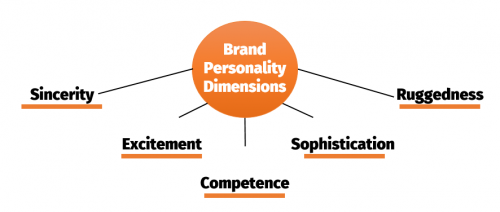
Be an #honestbrand in 2022 and beyond
These four pillars form the foundation of an #honestbrand. To build upon those foundations, businesses need people. Those people are everyone: the founders, the marketing team, the HR team, the sales team, the call centre team, the front of house team.
Whilst every business is different, the pattern remains the same. Good leadership, strong values and a clear vision pave the way for a business that can expect low staff turnover and loyal customers.
If you’re looking to put words into action, or you’re ready to start walking the talk and the walk, consider working with a brand agency like Journey. We begin our client relationships with a discovery period in which we can really understand a business, its people and their customers. From there, we can make informed and validated decisions around design, brand, marketing, content and much more.
It’s all about the Journey.
back to all news or you may also be interested in the news below:
TWEET OR TWO
To ensure you stay in the loop and receive our news, updates and general musings hot off the press, follow us on Twitter now. We promise not to bombard you!
Keep it simple, stupid. A phrase for all seasons, situations and scenarios. It’s never nice to be on the receiving end of it, so please take this intro in jest.
Simplicity should be a brand’s best friend. Whether a fledgling startup or a big, bustling business, a simple brand will always triumph over an identity that is confusing, convoluted and overly-complicated.
In this blog we’re not just going to be talking about brand design and identity, but culture and values too. Because a ‘brand’ is every part of your business, not just the logo on your letterhead or the particular shade of yellow on your business cards (“The tasteful thickness of it. Oh my God, it even has a watermark…”).
Let’s start with design
Between us, we’ve probably taken more logo briefs than Paul Rand and Saul Bass combined, and more often than once, we’ve found ourselves talking potential clients down from the lofty heights of barely readable cursive fonts and ill-conceived illustrations.
Take a look at some of the greatest (or at least most recognisable) logos of our time. Braun. Apple. BBC. Audi. They are cool, they are small, and most of all, they are simple. Of course, they have earned their place in the logo hall of fame, but even the earlier iterations of the Nike logo were a hot mess. Many of the better-known logos that we know today have been through a journey of simplification of their own, but that’s not to say brands need to come off the starting blocks with something overly-designed.

But don’t be fooled – this isn’t a cost-saving exercise. We certainly aren’t going to draw a quick ‘swoosh’ in Adobe Illustrator and hand it over for £300. But we also won’t be charging an exorbitant price for what seems like very little work. To us, it’s about research and balance. We will take the time to understand our clients, their values, their product and what they’re trying to achieve and with whom, and we’ll balance all of that in a logo (and wider brand) which works in a modern marketplace.
You may roll your eyes when designers push back on your ambitious identity design ideas, but remember, we’ve been here before, and this is what we do. Trust the process and you’ll be happier with the outcome, and more so, your audience will too.
Elementary, my dear Watson
Beyond the logo and arguably more important, are your brand elements. These could be anything from a bespoke set of icons, to pre-written taglines and headlines, or even your colour palette and font pairings. Once again, we don’t just throw the office dart at a Pantone chart and pick a shade. Colour science is important, as is perception and accessibility. Your brand is the coming together of beautiful design, imagery, colours and copywriting, which tell the user what they can expect from your organisation, as succinctly and as authentically as possible.
Sure, certain colours won’t work well with one another, and some are just meant to be. Some colours have connotations or associations, such as every IT company in the whole wide world using blue, or green being the agreed colour for sustainability and ecology. Accessibility should be a priority too. Colour contrast (and typography choices) can make or break the user experience of somebody with visual impairment. Keep it accessible.
Add too many brand elements to your toolkit, and your marketing teams will get confused and ultimately make mistakes. Add too few, and a rogue content designer may take it upon themselves to use unapproved illustrations or symbols, or worse-still, ClipArt. (Instant dismissal, surely.)
A brand toolkit should be expansive enough to convey meaning and messaging in a way that is simple and straightforward. Clear brand guidelines should help anyone from any area of the business to understand what can and cannot be used together. And with a gatekeeper or brand team to keep an eye on it all, consistency will remain present across all of your digital and physical channels.

Value the value of your values
A good brand will live and breathe its values in everything it does, from the internal company culture to the customer onboarding process. We absolutely love brands who get this right, and we love to help brands get this right too. Let your customers know what to expect when they deal with you, and don’t deviate from that promise.
A well thought out and thoroughly tested customer journey that is a true reflection of your business, is what will ultimately win you customers and/or sales. A poorly thought out or confusing customer journey, particularly one that doesn’t feel aligned with your overall brand, can push a customer away to the competition.
This is where a brand, a brand team and ultimately your brand agency too (hiya) should be doing the heavy lifting. If you’ve already put a great deal of time, thought and expense into how your brand looks, you’d be shooting yourself and all of your colleagues in both feet if you didn’t spend time considering how your brand feels.
Customers, employees and users are looking for honest brands more than ever before. Customer loyalty, despite it not being a 1950s high street, is still very much alive and well, and websites like Trustpilot and Glassdoor make it very easy to unearth the ‘nasties’ in many industries.
If you’ve spent time building a vibrant, diverse and positive workplace culture, it would be a tremendous shame to exclude that from your brand. Even so, we’ve been in several brand workshops where our clients say things like “But why would our customers care about who we are?” Well, for many it’s almost all they care about.
Demonstrate to the wider world how you’re a better organisation than ‘them next door’ and do it in a way that is simple and sincere. Remember, audiences have already forgotten that they have an attention span before they even hit your website or open your app, so it’s key that you get across what you’re trying to say concisely, not only in word count, but in visual design too.
It’s great that you want your brand’s personality to come across, but don’t overdo it. Too much copy, and you’ll lose your audience. Too much wordplay, and you may lack sincerity. Too few photographs, and you’ll lack the human touch.
Keep it simple, stupid
We are reiterating ourselves because it is just so important. Take a look at our portfolio of work and you’ll see a common theme. Clear, accessible design that lets brands and their personalities speak for themselves.
In a world where add-ons, upgrades and uploads are flooding our minds with realms of information, it pays to keep it simple.
You’re not stupid. Sorry we called you stupid.
If your brand needs simplifying or you’re having trouble saying what you mean, let’s talk. Fill in the form at the bottom of this page and we can set up a call or a meeting.
back to all news or you may also be interested in the news below:
TWEET OR TWO
To ensure you stay in the loop and receive our news, updates and general musings hot off the press, follow us on Twitter now. We promise not to bombard you!
Get out of your own head. Right now. Whilst it’s comfortable, familiar and safe, it’s no good to anyone else if you’re spending all your time in there. It’s particularly disruptive to your brand, your audience, and your employees.
As creatures of habit, we like to reassure ourselves that everything is going to be okay. With that, we make assumptions that others have the same outlooks and experiences as us. This generally makes for an easier life, and avoids ideas of anxiety or worse still, being WRONG. (Spoiler alert: sometimes you are wrong.)
In Seth Godin’s book, Marketers Are Liars he compares ‘worldview’ to a lens. “Present the same data to two people with a different worldview and they may take entirely opposite decisions.” Marketers regularly forget this. Which is why people like Seth feel compelled to bang on about it so often. Sorry, Seth, but you do.
The argument certainly holds water. Products, processes and even projects can go in different directions depending on who they’re exposed to. Everyone has seen the meme where the perfectly paved path has been circumnavigated by a line through the grass. Whilst some people like to follow the intended path, others like to carve their own.
Another great and real-world example of this is Juicero. This blog isn’t long enough to tell the full and frankly ridiculous story of Juicero, but maybe watch this YouTube video when you get a moment. Juicero fell down a massive $120 million hole because through general lack of communication, planning and strategy, they released a juicing product which was ultimately deemed entirely useless. Ouch.

What are you playing at?
Validate your ideas.
Whilst many organisations, particularly startups, are the brainchild of just one or two people, it’s incredibly important that the idea or concept is communicated outside of the immediate founders’ circle. Many entrepreneurs may be apprehensive about doing this as it can reveal the big idea or even blow the cover on intellectual property. Legalities aside, it’s important to validate an idea whilst it’s still in its infancy.
Validation can take on many forms, the most popular of which are user testing (where an NDA would be essential) or building an MVP (minimum viable product). This early stage research can reveal gaps in your marketing plan, accessibility issues for certain demographics, or practical limitations of your product or service. Nip these issues in the bud early, and you’ll save a great deal of cost and embarrassment further down the line. Especially when people are making YouTube videos about your failure.
Journey says…
Whether you’re launching a new and disruptive yoghurt brand, or meeting with your creative agency, it’s essential that you lay everything out on the table. In agency world specifically, the more that we know about you and where you want to go, the easier it is for us to help you get there.
This is a particular area that we really enjoy, as we’re essentially joining you for the ride, and your success is our metric. During the initial stage we will ask probing (but important) questions such as:
- Who is your product or service for and how have you identified that there’s a market need for it?
- What is special about you, your brand, product or service? We can’t decide that for you, but if we can help you find your identity, then marketing, brand and design suddenly gets a whole lot easier
- Which channels are important to you? Where are your potential customers congregating? Twitter? TikTok? Outside the local butchers?
When you work with an agency, make sure they grill you like a well done sirloin. If they don’t, they’re not doing their job right.

Come out punching.
Launch with purpose.
First impressions are everything. First date, first day of school, first launch of your product – it all matters. Many hopeful brands that may have had potential ended up a flop due to their poor launch. We’re not expecting you to fire your product out of a comedy oversized cannon, but in a marketplace that is crowded, noisy and fast-moving, it pays dividends to put creative minds and a relatively big budget behind your initial marketing campaign.
Journey says…
Don’t cut corners on design. Audiences are not only fickle and judgemental, but are visual beings too. Whether we’re talking about the logo, the website or the packaging, it all needs to hit bullseye to turn a prospect into a customer.
Consistency is key, too. It makes us sad when we see inconsistent branding. Byron Burger is a superb example, which is covered well in this blog. Not sure about you, but to us it looks like an overzealous designer delivered too many logos, and the brand couldn’t decide which to go with! Bright idea, or a bit weird?
Customer experience should be a priority, and no matter what the touchpoint, no matter how large or small (from the postcard inside an order through to the thank you page on an online form), it should all feel well-considered and cohesive.
You can achieve this by centralising your creative. This may sound like it goes against the grain as the web itself becomes more decentralised, but in essence it makes perfect sense. Brands and organisations can start to lose consistency when various aspects of their marketing output are spread across too many agencies or suppliers. Working with one core agency on marketing, design, web, strategy, social media (and more) ensures a unified standard across the board.
If you’re worried about putting all of your eggs into one basket, select an agency that has long-lasting relationships with their clients and decades of industry experience. Is that a shameless plug for Journey, established in 1995? Yes, yes it is.

Never stop talking.
Communicate in all directions.
Communication is key throughout a business, internally and externally. There are benefits to both. Internally, good communication, unwavering transparency and clear and well-communicated values build a strong and unifying culture. We talk more about that in our previous employer brand pieces which you can read here.
External communication, which is generally marketing and PR, keeps your customers informed, spreads your message to new customers, and when done very well, makes customers feel valued. We are now in an age where you can exchange some lighthearted ‘bants’ with your favourite supermarket via Twitter. What a time to be alive. Memes and viral tweets aside, this is a concentrated marketing effort which builds rapport, trust and awareness, no matter how much you like or dislike grocery shopping.
Journey says…
Build a strong and inclusive social media presence. Do this through accessible design, great copy and a clear strategy. Be consistent in your scheduling and ensure that you’re considering what you are posting where. Remember, a Facebook audience is not the same as a LinkedIn audience. In fact, LinkedIn folk can get very passionate about this.
Social media is exciting and fun, but internal communication is essential too. We can’t stress enough how important it is for the longevity of a brand to build a company culture that not only attracts employees, but keeps employees. In the age of Glassdoor—TripAdvisor for organisations—there is no hiding away from micro management and terrible bosses. (For the record, the bosses at Journey are superb and they did not tell me to write this.)
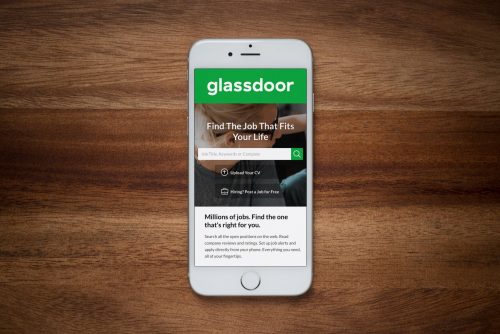
Wrapping up
Clarity and communication should be front of mind in just about everything you do as a business or business owner. It should transcend every strata of your brand, from internal meetings through to public announcements.
Get all of this right up front, get the sign-on from the board early on, get the processes, designs and teams in place before you get tripped up, and you’ll never go wrong.
If you need help communicating to your customers, defining your brand, or discovering your voice, talk to us. We’d love to hear from you.
back to all news or you may also be interested in the news below:
TWEET OR TWO
To ensure you stay in the loop and receive our news, updates and general musings hot off the press, follow us on Twitter now. We promise not to bombard you!
The great depression, the great recession, the great resignation. Turns out that if you find ‘great’ before a relatively large word, it’s not so great at all. Sadly, ‘the great resignation’ shaped the world of work for many throughout 2021. Looking at the job economy and resignation rates, it doesn’t look like it’s going away any time soon either.
The phrase was coined by Anthony Klotz, professor and organisational psychologist at Texas University. It was during an interview with a US news network last May, and described the wave of people leaving work during the pandemic.
This isn’t to be confused with people losing their jobs as a result of COVID, but instead, individuals making the conscious choice to hand in their notice after reconsidering not only their job, but their career path or even their entire line of work. The rapid shift to remote working also played a part in many workers realising that they no longer needed to be tied to an office, or even a desk at all.
What Professor Klotz didn’t realise is that this seemingly momentary shift in attitudes was the beginning of a long-term movement. In the UK, it has been reported that one in four workers planned a job change at some point during the pandemic. But confidence remained high, with only 16% of these surveyed workers expressing concern at finding a new role. Across the pond, things are a little more worrying, with 4.5 million Americans leaving jobs, putting the country at its largest number of job openings since 2000.
So whilst ‘the great resignation doesn’t make for particularly uplifting headlines, it’s important to remember that this employment phenomenon will ultimately be, for the most part, a positive one.
Some tangible examples are:
- Salaried workers switching to self-employed roles (as limited companies or sole-traders) for the flexibility and freedom
- Workers using their time on furlough to learn new skills and ultimately change the trajectory of their career
- Or simply, people are switching to more fulfilling or less stressful careers, as COVID reminds us all how precious life is
Culture: the missing piece
In recent research by Microsoft, Gen-Z respondents appeared particularly frustrated and restless in their work, with 60% of the group indicating that they were not only struggling at work, but less engaged overall with their jobs.
We saw a number of posts on LinkedIn throughout 2020 and 2021 declaring the shift to remote work unfair on younger generations, who are missing out on vital workplace connections, company culture and a positive work/life balance. Instead, they are restricted to Zoom calls, long hours at makeshift bedroom desks, and the occasional Amazon voucher in the post if the boss is feeling generous.
We’re inclined to agree; office relationships and in-person connections are some of the key proponents to a strong and vibrant workplace culture. Much of the employer brand work that companies and organisations have strived so hard to get right have been somewhat eroded in recent years, and it’s sad to see. We also believe that a well thought out proposition that combines flexibility with time in the office is most likely to win the day for the majority of businesses.
If you missed our previous blog on how employer brand can shape culture and encourage growth, check that out here.
What’s next?
Kurt Vonnegut once said “You can’t fight progress”. He went on to say “The best you can do is ignore it”. It’s fair to say that the great resignation is progress of sorts. Employees aren’t standing up and revolting, or rejecting a broken system. But they are realising, in their masses, that life is too short for mediocre work at companies that don’t treat their employees well.
Any business or organisation, no matter how big or small, who choose to ignore it will very quickly find themselves losing good staff hand over fist.
More recent research suggests that a staggering third of UK workers are considering a career change in 2022. The industries most likely to be affected by this continuing movement are legal (44%), IT (42%) and sales, media and marketing (40%).
Go hybrid or go home
Unsurprisingly, businesses offering remote working are less affected, but companies offering some kind of hybrid model are coming out on top. 16% of employees are considering leaving their roles due to their employers insisting that they come into the workplace or office when they’re perfectly able to work remotely. Whilst we do fly the flag of office culture, we are very much ‘Team Hybrid’. To us, it’s about choice and whilst finding the sweet spot may take more time, the pandemic gave us a new baseline from which the only way is up.
Get yourself connected
Whilst it’s a relatively small number, 13% of workers are choosing to leave their roles because their employers are not investing in technology that allows teams to collaborate remotely. This could be anything from shared and creative workspaces via browser-based apps such as Miro, or robust filesharing functionality that makes it easy for multiple people or teams to work on the same document or project at the same time.
Get serious about asynchronous
Asynchronous work is more straightforward than it initially sounds. It’s simply the practice of working on or with a team who don’t all need to be online simultaneously for the project to retain momentum. This is well suited for digital-first businesses where some workers may be UK-based and others working in different time zones.
Loosen up or lose out
Your staff may not be leaving in droves, but don’t get complacent. That doesn’t mean they’re not thinking about throwing the towel in. So now is a critical time to start making changes to your company’s policies and practises.
Think about how your leadership team communicates with your employees. Think about how you demonstrate your company values to your employees and potential employees too. Think about how you can attract a new wave of employees – employees who are looking to move to a progressive, forward-thinking and future-proofed business.
You can do this through employer brand and internal communications. In fact, to be an honest brand in 2022 and beyond, your values, your company DNA and your ‘why us’ should be crisp, concise and clear in every single thing that you do, internal or external.
If you need help getting your employer brand in shape, or perhaps you feel it’s time to finally get your company values set in stone, then talk to us, and we can help you get there. It’s time to take the leap.
“We have to continually be jumping off cliffs and developing our wings on the way down.” Kurt Vonnegut
If you want to talk to an experienced agency who know and value the importance of workplace culture and employer brand, get in touch today.
back to all news or you may also be interested in the news below:
TWEET OR TWO
To ensure you stay in the loop and receive our news, updates and general musings hot off the press, follow us on Twitter now. We promise not to bombard you!
At the end of last year, we took a deep dive into employer brand and why we feel it will be key to attracting the right people to your organisation in 2022 and beyond. With a global shift in employee expectations, it’s never been more important to be an honest and transparent brand.
In this piece, we’re going to be looking a little more at the tangible efforts that employers can and should be making to attract employees. It’s worth noting that this goes far, far beyond salaries and benefits, with a recent survey from Barometer putting salary fifth on a scale of importance, being topped by leadership, structure, culture and opportunities.
Brand and culture
Be transparent
This isn’t just about being clear on your overall brand purpose and values, but demonstrating it through marketing channels where you know potential employees can find you.
The tables have turned a little here. A few years ago, the conversation was centred on employers checking potential employees’ social media accounts. But with a number of notable and high-profile media backlashes, organisations have cooled off and it’s now jobseekers that are trawling brands’ social media pages for insight into what it might be like to work for them.
Your online presence is your ‘shop window’ into how your company operates. From how you speak about your staff to how you demonstrate success, your Instagram business profile is just as important as your website’s careers page. Here are a few quick tips to get you started:
- Be consistent in your messaging, whatever the platform
- Measure your outputs – analyse what works and what doesn’t
- Respond and reply, and consider how to deal with negativity, if any
- Allocate ownership. Who looks after these channels?
Find your employer brand voice
Tone of voice isn’t just for marketing copy and social media. Job descriptions and adverts are often the first port of call for potential employees. Get this wrong and you’ll lose them in an instant. Millennials, gen Y and gen Z are all looking for challenges and opportunities in their work, and despite misconceptions, they are not a ‘turn up, get paid’ generation.
A good job description is not a page of bullet points littered with benefits, targets and KPIs. It should be human, inspiring and exciting. Consider working with a marketing or brand team to give your copy the prestige and clarity it deserves.
Remote and flexible – it’s what the people want
Throughout the pandemic, the world sent employers a clear message. A great deal of employees enjoy working from home and want to continue to do so. It’s also widely apparent that employees require flexibility around everyday factors such as childcare, healthcare and wellbeing.
Whilst some businesses smoothly transitioned to a distributed way of working, others are still struggling. What’s important here is that organisations listen to the wants and needs of their employees. If brand X aren’t willing to offer WFH options, and brand Y are, it’s clear that many employees will favour the latter. This isn’t just something to be considered for job seekers. Companies are actually losing employees as organisations order staff to return to the office.
Hire for attitude as well as aptitude
When’s the last time someone asked to see your GCSEs or O-Levels during an interview? We’ll bet just about never. Whilst experience is important, qualifications have taken a back seat for quite some time (more so in some sectors than others).
Many businesses are hiring staff based on ‘fit’ in a bid to uphold company culture. This is a trend echoed by employees, 83% of which said that workplace culture is something they look for in new roles. But there is a caveat here, and it’s a pretty big one. Don’t build a cult. You may laugh, but if you become too precious over who you do and don’t hire based on their cultural background, and you’re veering dangerously close to descrimination.
Be diverse
We don’t need to sell you diversity in the workplace. It’s the right thing to do, and gender, ethnicity and age should not affect the choices made by hiring managers. In 2018, a third of US employers said that they are ‘less likely’ to hire transgender workers. We hope the world has improved somewhat since that research, but we certainly aren’t all the way there yet.
Hiring for diversity is a no-brainer, but there are myriad benefits to building teams with different backgrounds.
- 85% of global enterprises believe diversity is crucial to fostering innovation
- 79% of companies believe that diversity initiatives have positively affected company culture
- 83% of executives agree that a diverse workforce improves a company’s ability to retain clients
Create a ‘clubhouse’ culture
Working from home is great, you don’t need to convince us. But it’s not for everyone. A Forbes study found that 90% of gen Z workers desire and value a human connection when it comes to at-work communication. Platforms such as Slack and Teams are only a partial solution.
Remember to reconnect as a team, and create a space or a time for employees to meet, work together and socialise. We’ve seen a number of businesses refer to their workplace as a ‘clubhouse’ – open to all at any time, and a central place for employees to come and go for work and pleasure.
Leave space for learning
Whether a specialist or a generalist, there’s always something else to learn. That could be a new programming language, a new application, or a new method of working. Staff are hungry for knowledge, but with 24.5 million of the UK’s employees working 40+ hours a week, it’s difficult for many to find the time for training and learning.
Organisations that offer upskill budgets, learning opportunities or on-the-job training will excel here. Learning is closely linked to job progression, and this is reflected in Glassdoor’s 2020 employee survey, citing internal career opportunities as the second most important job factor.
Recruitment and rewards
Think of recruitment as a long game
Reactionary recruitment can be damaging, and here’s why. Think of recruitment as a strategy and a continual marketing effort, not a momentary process to solve a temporary problem. A proactive approach to recruitment not only builds a pipeline of roles and candidates, but goes some way in formalising your internal recruitment process.
Try to be more proactive in your recruitment efforts by:
- Building a pipeline of roles for the year ahead
- Agreeing upon a clear recruitment process
- Giving clear and honest feedback to candidates
- Never stopping looking for the ideal employee
Reward loyalty
We’ve seen it all before: “I’ve bought every iPhone ever and still have to remortgage the house to upgrade to the new one.” Brands, for the most part, suck at loyalty. Whilst we understand that everything comes at a price, it doesn’t cost much to reward loyal customers. Or in this case, employees.
Referral bonuses are a great way to encourage your staff to recommend potential new employees. And if you’ve built your existing company culture well, you can expect more shining stars to walk through the door.
Long-term loyalty shouldn’t be forgotten either. Go a step further than offering an additional day’s holiday. Think about your employees on an individual level. What would benefit them? What makes them tick? What’s going on outside of their work?
There’s a lot to digest here, and there are implementation challenges for companies whatever their size. For small businesses, budget can provide challenges around formalising the recruitment process or executing marketing efforts. For larger businesses, time and process can be a blocker, with the age old adage of “But we’ve always done it this way” causing many a speed bump and eye roll.
Something to consider if you’re either of these kinds of business, or anything in between, is a brand agency. Outsourcing to or consulting with an agency that specialises in employer brand can give you the kickstart that you need, and help you on your way to building a culture and process that you’re truly proud of.
If you want to start 2022 with some positive conversations around employer brand, we should talk. Get in touch today.
back to all news or you may also be interested in the news below:
TWEET OR TWO
To ensure you stay in the loop and receive our news, updates and general musings hot off the press, follow us on Twitter now. We promise not to bombard you!
There are two acronyms that you should know about. EB and RM. One is a brand function, one is a marketing function. The two are intrinsically linked, yet fundamentally, they are very different.
We’re talking about ‘employer brand’ and ‘recruitment marketing’.
In this piece, we’ll be focusing on the importance of a strong and sincere employer brand, but we’ll also touch on other aspects too, such as recruitment marketing and employee value proposition (EVP – another acronym).
What employer brand isn’t
It’s not uncommon for people to assume that recruitment marketing and employer brand are one and the same.
For the sake of simplicity, let’s say that employer brand is your company’s reputation as an employer. Recruitment marketing is the way in which a company may utilise various marketing methods and channels to showcase the employer brand, and ultimately attract new employees. Or as they say in the biz: talent, darling.
The overall employer brand strategy will inform the marketing team how and where to market the business, from channels as big and exciting as billboards, down to the nitty gritty such as how the job spec is written.
If this all works well and you start seeing applications arriving, congratulations, you’ve mastered inbound recruiting (IR).

What employer brand is
We’ll skip the basics and share with you the ‘big four’ employer brand questions that you should be asking yourselves:
- What is it that makes you such a good employer in the first place?
- And why would your candidate want to work for you?
- What kind of roles are you looking to fill in the short and long term?
- What does your ideal candidate look like?
These questions feed off the employer value proposition, which is made up of five areas. These can differ depending on which research or studies you refer to, so we’ll share the set most relevant to 2021 and beyond:
- Compensation
How do you stack up in terms of salary? What opportunities are there for pay rises and promotions? How do you evaluate or review your permanent staff? - Benefits
What do you offer to employees as part of your standard package? This is things like holidays, insurance, pension scheme, child care and compassionate leave. - Career
This differs a little from what we listed in ‘Compensation’. It’s more about training, progression and development throughout an employee’s career rather than a specific focus on pay and promotions. - Work environment
In the day-to-day, how do you recognise excellence, promote a fair work/life balance and make employee’s roles and responsibilities clear? - Culture
This is a more inclusive approach to work. How are employees made to feel part of the company’s goals and aspirations? How are they trusted and supported? What does it feel like to work at your company?
To avoid confusion, think of employer brand as the all encompassing overview, whereas EVP is the direct set of values and benefits that you offer your employees. It is also a key driver in keeping employees, as well as hiring.
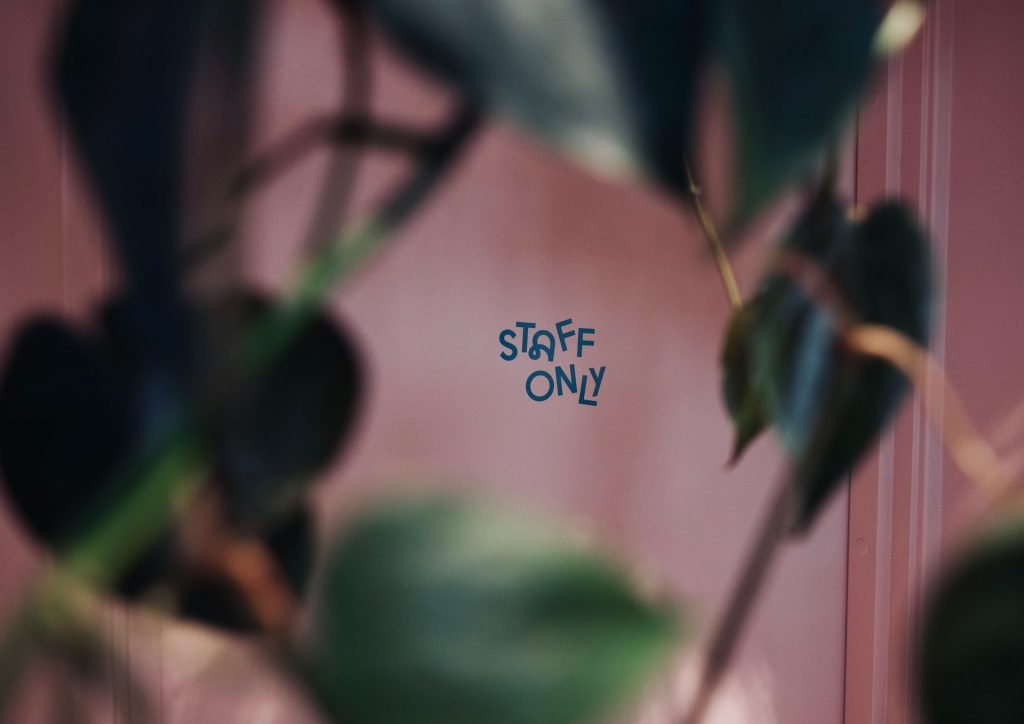
Who’s looking for employer brand?
In short, everyone. Whether they know it nor not. People are driven by different motivators when looking for a job. For some it may be salary, for others, a fun and inclusive culture. And no matter how focused they may think they are on these individual elements, they will subconsciously notice many other elements along the way too.
From the way the hiring manager speaks to the candidate, to the structure and language of the job description. Even the layout and design of the office through to how they feel when they visit. If an employer is being interviewed remotely, what does the process look and feel like for them? Are they left waiting in a Zoom room for an unacceptable amount of time? Are they even given enough of an opportunity to get a feel for the role, or are the hiring managers cold and standoffish?
This all matters.
75% of candidates research a company’s reputation (and employer brand) before showing interest in a role.
And on the flip side:
83% of companies see employer brand as playing a significant role in their ability to hire.
With the rise of platforms like Glassdoor, where companies can be rated not only by employees past and present, but even interviewing candidates too, there is nowhere for bad brands to hide. 68% of candidates would simply not join a company with a bad reputation, even if they did not have a job at the time.
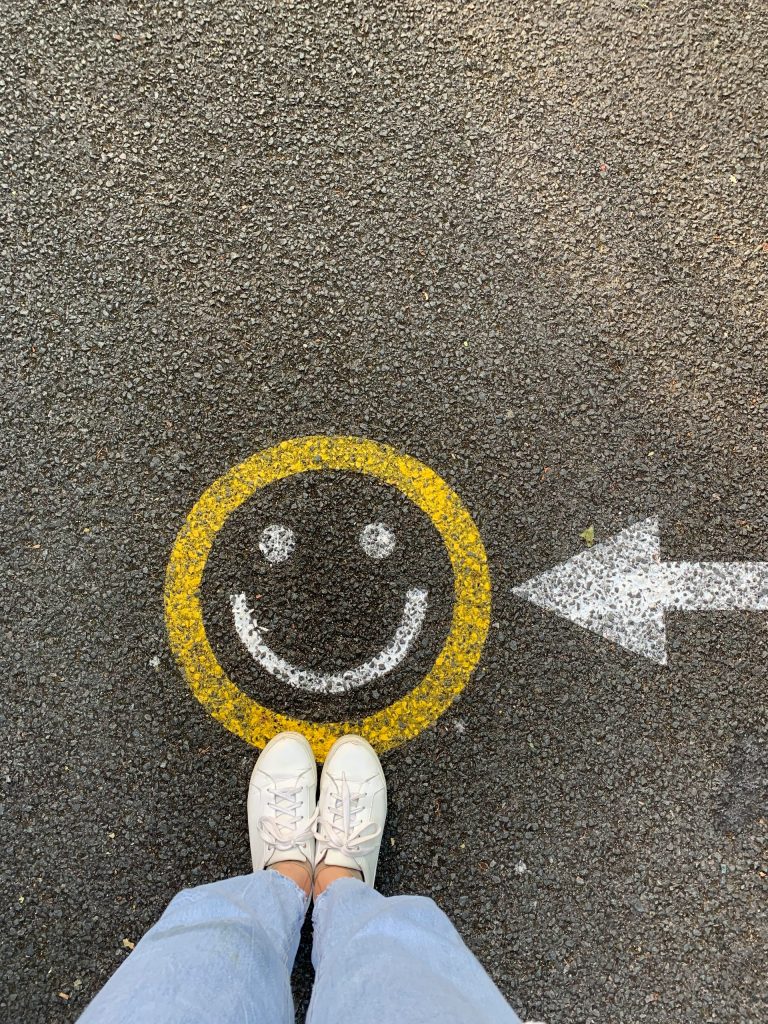
How employer brand and brand identity go hand-in-hand
There’s no confusing graph here, no mind-boggling stats or bold industry quote. It’s really quite simple. Brand is everything.
Employer brand is not an add-on or an afterthought. It’s essential to the growth of a business and therefore should be ever-present when talking about brand or marketing. We feel that consistency is key when it comes to branding, and, you guessed it, honesty too. What good is a beautiful website, cool office and gushing testimonials when your onboarding process sucks and your Glassdoor rating is three stars?
Create a workplace culture that becomes part of your reputation
Brilliant businesses let their culture speak for itself. It is neither forced nor fabricated. It is simply a product of the positive working environment created by the employer, and in-turn, the employee. A good workplace culture promotes autonomy, inclusivity and wellness. But a good workplace culture is not a strive for perfection.
Work is, at times, difficult, and not everyone can and will get along at all times. So when situations inevitably do arise, an effective workplace culture will be an environment in which staff feel that they can be open and honest, and have a safe space to speak up and use their voice. And of course, a good employer will respond accordingly and appropriately.
Start by thinking about what kind of company you would like to work for, and then create a culture that supports it. The brand will follow. The brand is your culture, and your culture your brand.
Wellness in the workplace shouldn’t be a hard sell, but if you’re the one in charge of the numbers and are finding this all a bit outside of your comfort zone, let’s put it in more tangible terms for you: a great culture saves cash, and lots of it. High staff turnover, whilst absolutely dreadful for your employer brand, isn’t too good for your P&L either. A strong culture attracts and keeps talent, and works wonders for keeping recruitment spend down.
But if that’s your primary motivator, you probably won’t have made it this far down the page anyway!

Be brave, be bold
Those are the first four words you’ll see when you visit our website. It applies to everything we do, employer brand especially so. Be brave in your offering to your employees. Don’t settle for the ‘standard’. Build a company culture that is not like the rest. Be bold. Offer your employees benefits that go above and beyond.
But we’ll also add a third here. Be Proud. Proud of your company – not as a manufacturer, an agency, a business, or a service. But as an employer. After all, what is a business without its people?
2022 and beyond
Next year is a great time to revisit your employer brand and EVP. If you’re still running the same employer brand and EVP as you were in 2019, you should seriously consider revisiting it. We don’t need to tell you how much the world has changed in the last two years.
The momentous shift into hybrid and remote working was triggered by the pandemic, but was the momentum continued by millions of employees around the world ready for a new way of working.
Despite many offices and coworking spaces going back to the way things were, there is a new expectation from employees, and an employer brand should reflect that. Whichever way you look at or feel about remote working, this is a progressive shift and one that companies will need to embrace to continue to hire the best talent.

Now is the time
If employer brand is something you’ve been thinking about for some time, or perhaps your old strategy needs resurfacing and entirely redesigning, then now is a great time to do so. We are at an inflection point where employees are voting with their feet more than ever, and as the technology industry touts the metaverse as the next big thing, we are approaching newfound levels of personal freedom that dusty old brands may struggle to keep up with.
So what are you waiting for? Brush up on the acronyms, start thinking about your employees past, present and future, and ask yourself “What kind of brand would I like to work for?”
back to all news or you may also be interested in the news below:
TWEET OR TWO
To ensure you stay in the loop and receive our news, updates and general musings hot off the press, follow us on Twitter now. We promise not to bombard you!
Let’s put this out there: it’s okay to lose sight of your brand positioning.
Running a business is hard. Marketing teams are busier than ever, with new channels appearing overnight, and customer behaviour changing day-to-day. Sales teams are recovering from what has been an undeniably challenging few years. Product teams are burned out with piling pressure to “be more innovative!” But despite the testing times, businesses are busy.
Sometimes, even though it feels like all of your teams are moving with momentum, they aren’t necessarily running in the same direction. When this starts to happen, it could be that you’ve taken your eye off the brand.
When you start to lose sight of your identity, other things can begin to slip too. Values, and therefore, quality. Consistency, and therefore, repeat business. Passion, and therefore, new customers or big wins.
The bad side of busy
If you’re big enough, it’s likely you have an entire brand team keeping everyone in check, and that’s great when your brand needs to carry across cultures and regions. When you’re starting out, or you’re established but haven’t found the need for a brand function, it can be difficult to know whose responsibility it is.
Maybe you’re the founder, and you’re having trouble articulating the vision you’ve had in your head all these years. Or perhaps you’re the Head of Marketing, and you know exactly what you want to say, but can’t find a correct, or creative, way of saying it.

Enter stage-left: the brand agency
It’s clear – brand is an entire department, and the thought of building that out as a new team or creating an internal supergroup from all of your best people is a little daunting. But we’d still say to give it a go. If a client comes to us having already taken the time to agree on some kind of loose idea of what or who they want to be, that’s commendable, and you’re already one step of the way there.
For the rest of the journey, we’ve got you. Our discovery workshops form the very beginning of our branding projects, and are an open table at which we can discuss your business, your people, you culture, and just about everything else that makes you tick as a brand. The more open you can be with us at that moment, the more brightly that lightbulb moment will be when we hand you back the results sometime later.
So what can you do ahead of engaging a brand agency to give you (and us) the best chance of a truly honest journey to finding your identity?
Let’s break it down into five key areas – areas that we feel you should have a firm understanding of before you hire a branding, marketing or creative agency.

Start with you
In the age of the entrepreneur, it matters what you say, think and feel about your business. Customer behaviour has changed significantly since the mad men ad campaigns of the 1950s. Audiences don’t buy into clever copy and the promise of hopes and dreams. They buy into the brand story, and that story begins with you.
When it comes to the crunch, many leaders fail to articulate exactly what their purpose is as a business. Take time to perfect your position and how you speak about it. Understand the kind of values you want to be known for, and most of all, the products you want to be loved for.
Once you know it, share it. What was once a clever idea in the back of your mind can only truly become a big business if you share it openly and honestly with everyone along the way.
Align your team
Your team is an extension of you and your vision, and you should keep this front of mind when hiring. A business or product idea is at its most fragile the fewer people know about it. As you grow your business, your team, and start to ultimately think about your brand, everyone you’ve agreed to work with along the way should be there for a reason, and contributing to the overall vision and success of the business.
You need to be able to work well together, communicate effectively and not fall apart when the going gets tough. This is a challenge we see with startups who need to hire quickly and broadly. The quality can slip, which ultimately affects workplace culture and therefore productivity.

Talk about the brand
And ideally, talk about it with your team before you talk about it with an agency like ours. This shared understanding of how the brand should look and feel is key. By no means are we asking you to do our work for us, but an understanding of what you like, what you’ve seen, what you don’t like and what you don’t want to see will really help us in the early stages of brand development and discovery.
A promising brand will come to us and say “We want to be like x, but our unique differentiator is y.”
Never forget the customer
No customers? No problem. Research is invaluable, and you don’t need a finished product to do that. In fact, you don’t need any product at all. User research can begin from day one, and will really benefit your business journey by giving you an understanding of the market, current expectations, or dissatisfactions. Find where you can deliver value, specifically where others haven’t. Look for weaknesses in competitors’ products, and understand what customers are missing.

Don’t stop
We would encourage you to consistently revisit these areas at regular intervals throughout your business’ growth – at least a few times a year. It’s not uncommon for companies to lose focus, lose staff, and ultimately lose customers. Internal politics don’t stay internal for long, as we saw most recently with Basecamp losing a third of their employees in a very public walkout.
Regularly pulse check your business, your people and your customers. Those views, values and goals you set way back at the beginning should be your north star all the way through to where you are now, and beyond. Without that, the brand can lose its way, which can make it more difficult for a brand agency to understand your roadmap when it resembles a game of snakes and ladders.
We’re ready when you are
On our homepage, we say “In an age of mistrust, it’s never been more important for your brand to be an honest reflection of your business today.” Customers lose trust in businesses at the drop of a hat, but it’s not always through negligence. It can be something as simple of a lack of clarity or a confused message.
Understand your business first, then build your team and start to research your market. This puts you in a great position to start talking to somebody like us about brand. Agencies like Journey are more than just designers and copywriters. We are strategic partners ready and waiting to delve deep into your business, leverage its strengths and ambitions, and drive your company forward as one that’s meaningful and market-ready, not meagre and meandering.
back to all news or you may also be interested in the news below:
TWEET OR TWO
To ensure you stay in the loop and receive our news, updates and general musings hot off the press, follow us on Twitter now. We promise not to bombard you!
We live in a world where anything we want can be found in an instant. Customers want it now, so first impressions are everything. Brands need to stand out, but more importantly, their products and services need to satisfy the standards that customers are expecting. A beautiful brand or clever copy just isn’t enough.
How do companies make the correct decisions about who to be and what to say? How can they be certain that they’re producing exactly what their customers want? And how can they ensure that customers stick around, stay loyal and become fans?
It is essential that you convey your brand correctly (and honestly) to win and maintain customers.
1. Be enthusiastic – if you’re not, they certainly won’t be
You started your company because you believed in it. Nurture this passion and never lose focus of your brand story. Customers buy-in to an idea, a person or a lifestyle. Don’t be complacent and dull – shout loud and proud about your origins, your goals and your aspirations and most importantly, how you can help your customers solve their problems.
2. Be listening – read the market, do your research
Validation is key. Whilst your brand is your baby, your baby isn’t going to be everyone’s cup of tea. Research is a linchpin throughout the selling process. At the beginning: “Can we sell this product?” In the middle: “Who are we selling our product to?” And even at the end: “What can we do to get more sales next time?”
Customer insight is fundamental. Whilst research isn’t exactly the coolest part of the branding process, it’s a process that can save you a lot of time, money and guesswork. Identify personas, find your market, engage users, listen to what customers have to say. It’s as old as time, but the customer votes with their feet.
3. Be trusting – but build it first
Once you have connected with your customers, you need to maintain their confidence in your product and service. How can you continue to deliver real value to them after the initial sale? Keep communication channels open (welcome programmes, check-ins, offering new services or products). This continual messaging, when done correctly, will reinforce your brand and maintain fans.
Focus on what makes you different to the crowd. In fact, make that aftercare and brand experience so good that it is what differentiates you from the crowd. Stay positive at all times and this will radiate to your customers and enhance your relationship with each other. Trust us. Trust them.
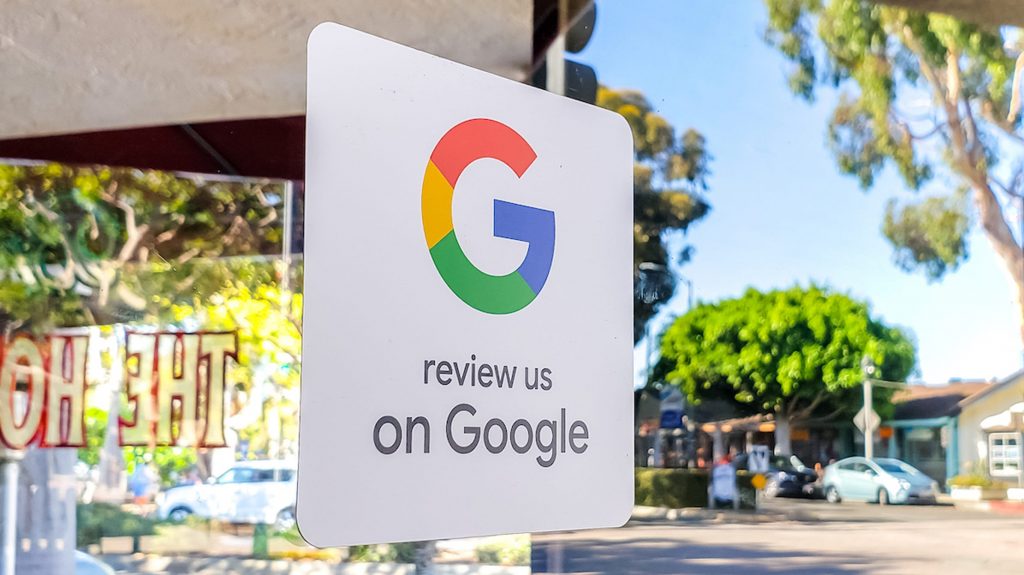
4. Be honest – no more hide and seek
Unsurprisingly, many brands tell customers anything they want to hear, and often it’s not the truth. Luckily, we find ourselves in a world where fibs, lies and misinformation are hard to disguise. With an abundance of channels and an infinite amount of information at our fingertips, customers will sniff out bad reviews and hard truths – it’s become an online bloodsport of sorts.
If customers have a requirement and are going to spend hard-earned money on it, then brands must be honest. No more hide and seek. Leave that to the children.
5. Be vocal – listen to every single customer
The use of net promoter scores (NPS), reviews, surveys or other measures create an environment of two-way communication where you are able to listen to your customers. And you can respond too. Social media shows us just how easy it is to have a jovial chat with a supermarket Twitter account. What a world we live in. But it’s a little more sincere than that. Brands must be natural and listen to their customers when they speak.
Be responsive. Drop the jargon. Act with sincerity. If you don’t, you may risk alienating your audience and they could lose their faith in you.
Customer feedback can also add incremental improvements to your product or service. As we said, anything can be found in an instant, so it pays to be able to react quickly, respond to customer demand, and make roadmap changes where necessary.
6. Be sincere – act with integrity
Focus on the purpose-driven consumer who, if you are living your brand honestly, will embrace you, your reputation, your values and direction. Be the change that you and your customers want to see. Back up your values with action and tell your customers about it. If your product promises to improve lives or solve problems, ensure that this ethos flows all the way through your company.
Customers aren’t buying you for your logo. They’re buying you for your integrity. If your product has won a Red Dot Design Award but you have a 2-star Glassdoor rating with employees foaming at the mouth, something is terribly wrong – you’re not acting with integrity.
7. Be flexible – you need to evolve
You don’t need us to tell you the story of 2020. Businesses top to bottom had to change. The world and its people are dynamic, sometimes unpredictably so. Your brand must be dynamic too. If your brand is performing well, you may ask yourself “Why change?” But it’s important that you don’t get complacent. Everything could change tomorrow and you need to be ready.
Maybe it’s a product pivot, or a drastic rebrand. Perhaps a new product line. Change keeps you relevant, but don’t alienate your customers. Look at what made you popular so far. How can you build on that and build better? How can you keep your existing customers and welcome new ones too? Change is one of the hardest things, and if you’re there now, see points 1-6.
8. Be strong – carve your path
Keep the brand, not the product or service, the main connection with your customer. Trends and demands change so your product may diversify, and in many cases, customers will only buy one product once from you. But with a consistent brand and a strong overarching message, you can keep customers coming back.
A great example is Greggs – an entirely unremarkable bakery chain continuing to ace PR and marketing awards year-on-year. Is it any coincidence that their straight-talking marketing messages pipped global brands IKEA and Netflix to the post? Greggs’ know their strength and they run with it – creating a brand of cult-like status elevated in no short part by their satisfied customers.
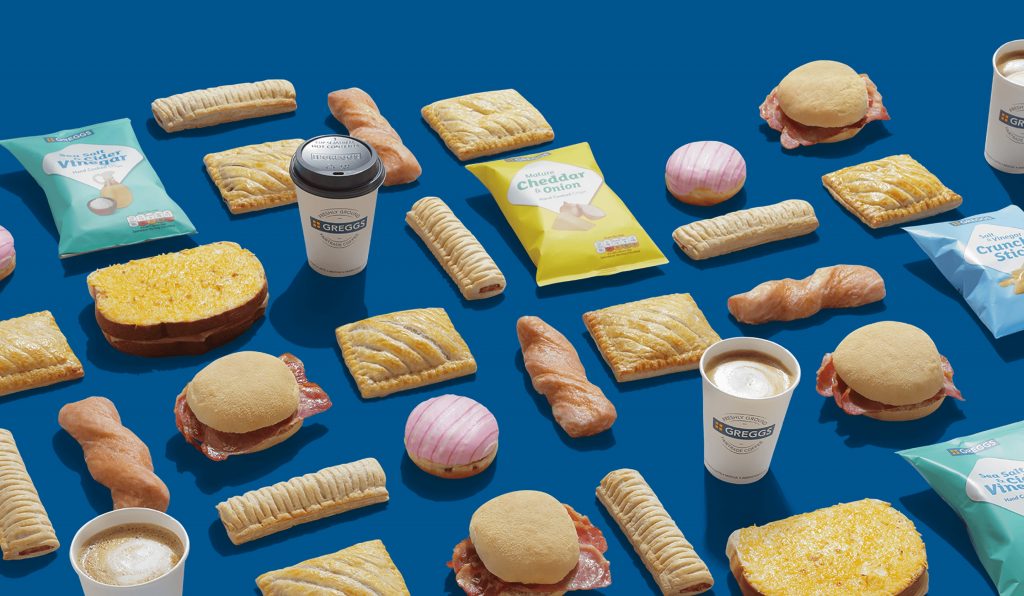
Brands are not built with a simple wave of a magic wand. Brands are not built in Photoshop, five minute brainstorms, or ideas on the back of a napkin. Those days are long over and today you must truly live, breathe and believe in your brand to ensure that your customers do too.
Do the groundwork, put in the legwork and the hard work, and focus on what you do best.
Identify how you are different and always, always be honest.
back to all news or you may also be interested in the news below:
TWEET OR TWO
To ensure you stay in the loop and receive our news, updates and general musings hot off the press, follow us on Twitter now. We promise not to bombard you!



